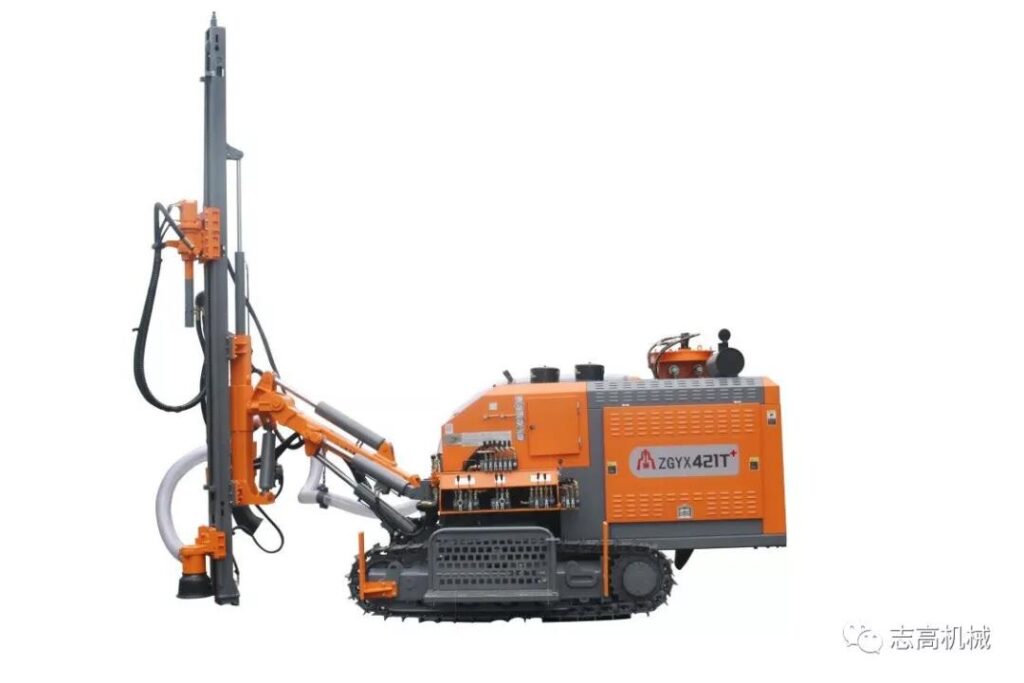Drilling rigs are generally divided into three categories: rotary drilling rigs, impact drilling rigs and compound drilling rigs.
Learn about rotary drilling rigs today
Relying on the rotary motion of the drilling tool, the rock formation is broken to form a hole. There are mainly large and small pot cone drilling rigs, forward and reverse circulation rotary drilling rigs, hydraulic power head drilling rigs
machine, down-the-hole vibratory rotary drilling rig, etc. A simple rotary drilling rig only has a drilling device, while a well-structured rotary drilling rig consists of a drilling device and a circulating well cleaning device. The drilling tools of rotary table water well drilling rig include drill pipe and drill bit. The nominal diameters of commonly used drill pipes are 60, 73, 89 and 114 mm. Drills are divided into two categories: drills for full drilling and drills for annular drilling. Large and small pot cones use their pot cone drills to rotate and cut the soil layer. According to the size of the drilling tools, they are called large pot cones and small pot cones, which can be driven by manpower or power. The cut soil chips fall into the pot and are lifted to the ground for unloading. The structure is simple and the work efficiency is low. It can only be used for general soil layers or layers with a diameter of no more than 10 cm and a content of no more than 50% of sand and pebbles. The diameter of the small pot cone is 0.55 meters, and the drilling depth is 80 to 100 meters; the diameter of the large pot cone is 1.1 meters, and the drilling depth is 30 to 40 meters. Positive and reverse circulation mud washing rotary drilling rig The commonly used rotary drilling rig (Figure 1), that is, the positive circulation mud washing rotary drilling rig, is composed of a tower, a hoist, a rotary table, a drilling tool, a mud pump, a faucet and a motor. During operation, the power machine drives the turntable through the transmission device, and the drill bit is driven by the active drill pipe to rotate and break the rock formation at a speed of 30-90 rpm. After the mud is pumped and pressurized by the mud pump, it is pressed into the hollow drill pipe through the faucet above the drill pipe, then flows down into the drill bit, and is ejected from the nozzle to cool and lubricate the drill bit; the bottom hole cuttings are taken out through the annular channel outside the drill pipe. At the wellhead, after sedimentation in the sedimentation tank, the mud flows back to the mud tank for recycling. The drilling method and structure of the reverse circulation mud washing rotary drilling rig are basically the same as the above, but the mud circulation mode is opposite: the mud flows from the wellhead to the bottom of the well by itself after sedimentation in the sedimentation tank, and the mud carrying cuttings is pumped through the sand and gravel pump. The nozzle of the drill bit is sucked upward out of the well through the inner cavity of the drill pipe and returned to the sedimentation tank. This method is called pumping reverse circulation. The water pump can also be used to inject the pressurized water flow from the bottom of the well through the nozzle into the inner cavity of the drill pipe to form an upward flow of water carrying cuttings, which is called jet reverse circulation. The drilling rig can form a high upward flow velocity in the drill pipe, and has a strong ability to discharge cuttings and pebbles, so the drilling speed is fast. It is suitable for soil layers, general sand layers and loose formations where the diameter of the pebble is smaller than the inner diameter of the drill pipe. However, due to the limitation of the suction or pressure delivery capacity of the pump, the drilling depth is generally within 150 meters, and the chip removal efficiency is higher when the well depth is within 50 meters. Compressed air washing rotary drilling rig is a rotary drilling rig with an air compressor instead of a mud pump, and compressed air instead of mud for well washing. Usually reverse circulation, also known as gas lift reverse circulation (Figure 2). That is, the compressed air is sent to the gas-water mixing chamber in the well through the gas supply pipeline, and it is mixed with the water flow in the drill pipe to form an aerated water flow with a specific gravity less than 1. Under the gravity of the annular water column on the periphery of the drill pipe, the aerated water flow in the drill pipe carries the cuttings continuously up and out of the well, and flows into the sedimentation tank, and the precipitated water flows back into the well by gravity. When the well depth is large (above 50 meters), the chip removal capacity of this drilling rig is greater than that of the drilling rig using pump suction or jet reverse circulation, so it is suitable for deep wells and arid areas lacking water, as well as frigid permafrost strata.
Some rotary drilling rigs are equipped with mud pump and air compressor at the same time, and different well cleaning methods can be selected according to the situation.

